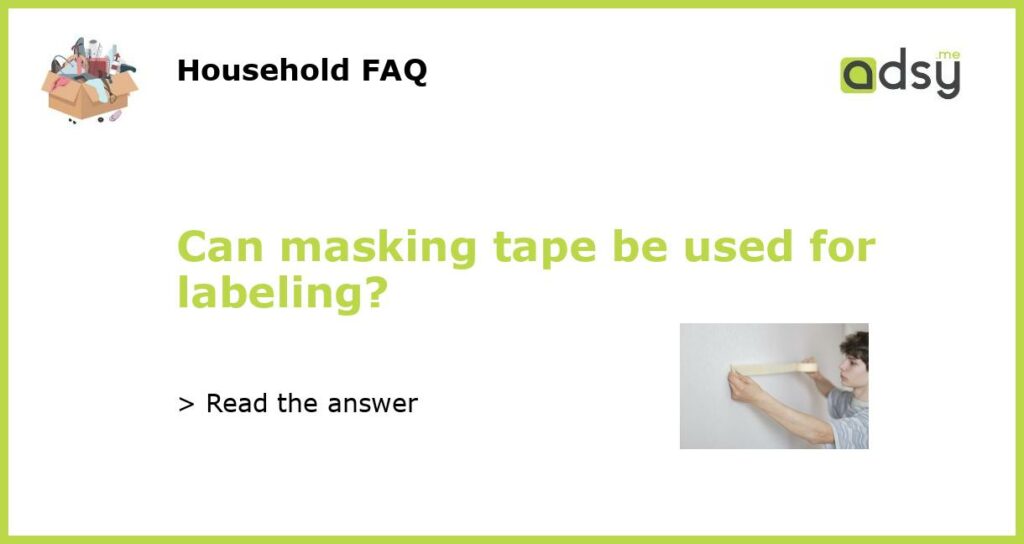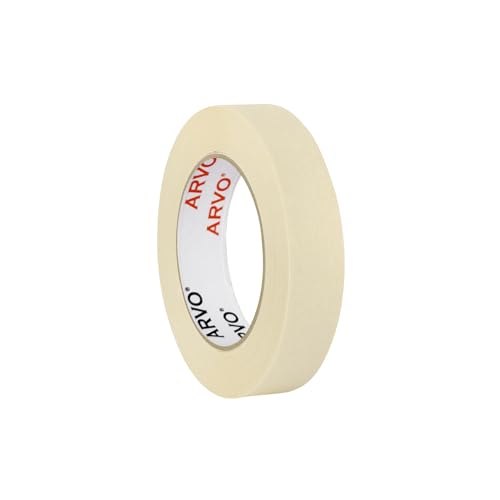Labeling is important for organization, identification, and safety purposes in various settings such as households, offices, and industrial workplaces. While there are different types of labels available, masking tape is a common household item that some people may consider using for labeling due to its adhesive properties and availability. However, the question remains whether it is appropriate to use masking tape for labeling. In this article, we will explore this question in more detail and provide an answer based on relevant considerations.
What is masking tape?
Masking tape is a type of adhesive tape that is easy to tear, flexible, and can be removed without leaving residue. It is typically made of paper or a combination of paper and plastic, and its adhesive properties come from a pressure-sensitive adhesive (PSA). The use of PSA allows the tape to stick to many surfaces, including wood, metal, glass, and plastic. Masking tape is commonly used for masking off surfaces during painting, as well as bundling or holding objects together temporarily.
The potential issues with using masking tape for labeling
While masking tape can provide temporary adhesion and be written on, there are some potential issues with using it for labeling. First, masking tape is not designed specifically for labeling purposes, which means that its adhesive properties may not be suitable for all surfaces and conditions. For example, it may not stick well to wet or oily surfaces, or surfaces that are subject to high temperatures or extreme weather conditions.
Second, masking tape is not as durable as other types of labels or tapes, which means that it may peel off or fade over time. This can cause confusion or misidentification of objects, which can be a safety hazard in some situations. Third, masking tape is not always easy to remove cleanly, which means that it may leave behind adhesive residue or damage the surface it was applied to.
The alternatives to masking tape for labeling
There are several alternatives to masking tape for labeling that are designed specifically for labeling purposes and have better durability and adhesion properties. Some of the common labeling options include:
- Labeling tape: This is a type of tape that is designed specifically for labeling and comes in different colors, sizes, and adhesive strengths. It can be written on with markers or pens and provides better adhesion and durability than masking tape.
- Writable labels: These are labels that can be written on with markers or pens and can be attached to various surfaces. They come in different shapes and sizes and can be made of paper, plastic, or vinyl.
- Industrial labels: These are labels that are designed for industrial settings and can withstand harsh environments, such as exposure to chemicals, UV light, and extreme temperatures. They can be made of polyester, polypropylene, or vinyl and come in different colors, sizes, and adhesive strengths.
In conclusion, while masking tape can be used for labeling in some situations, it is not the best option due to its potential issues with adhesion, durability, and residue. There are several alternatives to masking tape for labeling that are specifically designed for this purpose and provide better adhesion, durability, and versatility. Therefore, it is recommended to use these alternatives instead of masking tape for labeling to ensure clear identification, organization, and safety.






